Abstract
The trend in payment for nursing home services has been toward making finer distinctions amont patients and the rates at which their care is reimbursed. The ultimate in differentiation is patient-centered reimbursement, whereas each patient's rate is individually determined. This paper introduces a model of overpayment and under-payment for comparing the potential performance of alternative reimbursement schemes. The model is used in comparing the patient-centered approach with case-mix reimbursement, which assigns a single rate to all patients in a nursing home on the basis of the facility's case mix. Roughly speaking, the case-mix approach is preferable whenever the differences between patient's needs are smaller than the errors in needs assessment. Since this condition appears to hold in practice today, case-mix reimbursement seems preferable for the short term.
Full text
PDF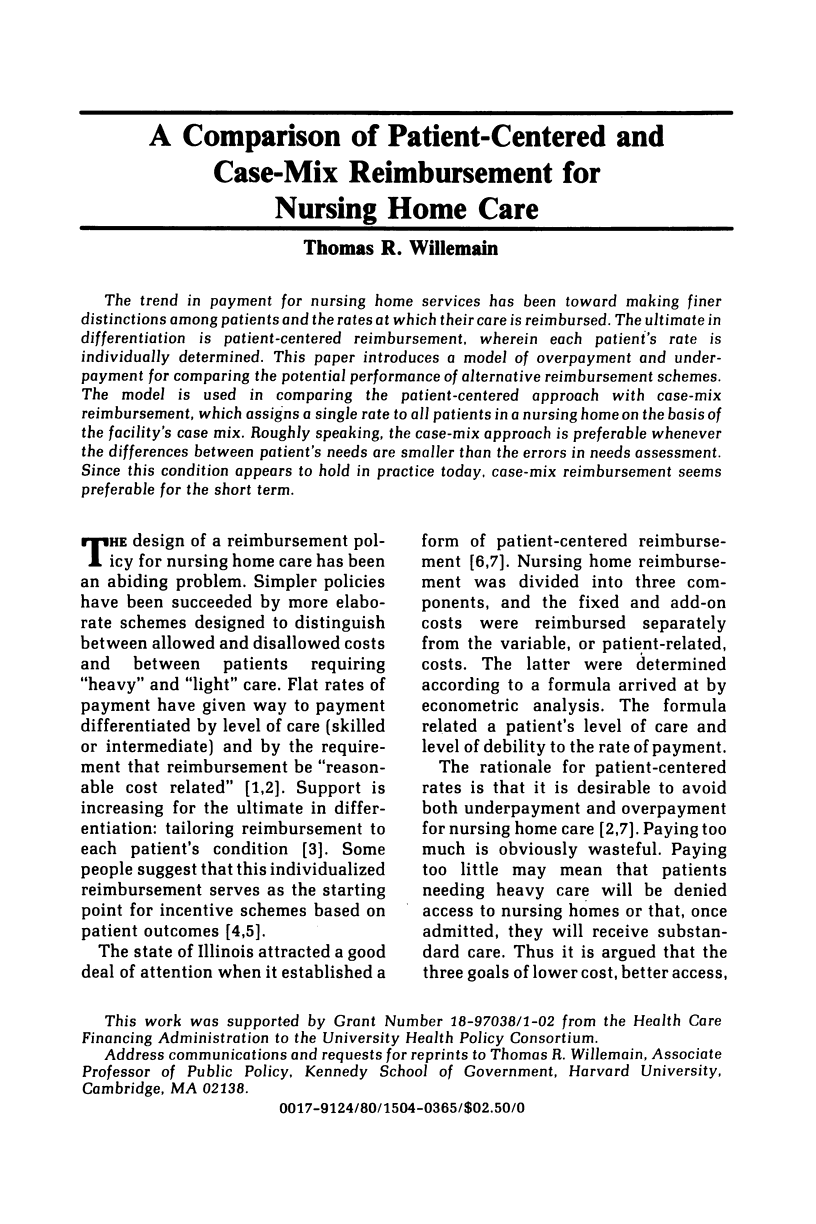
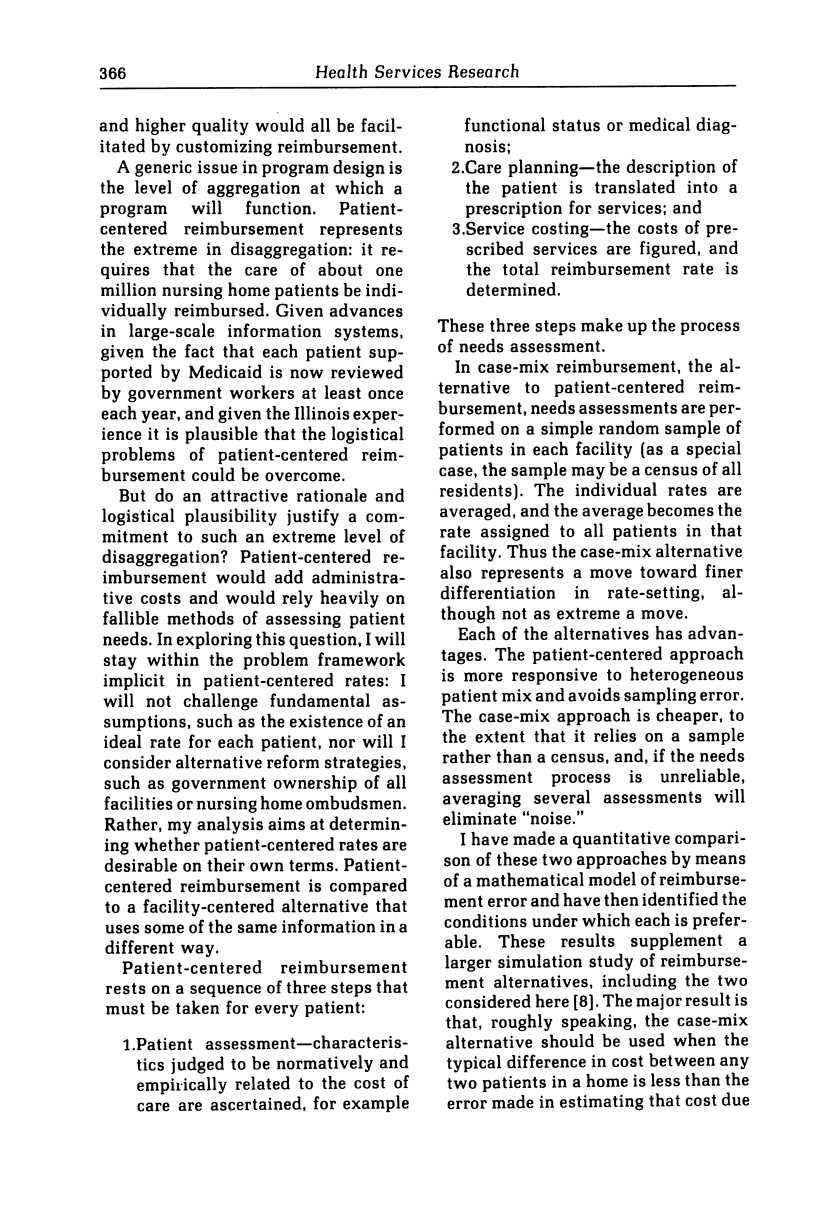
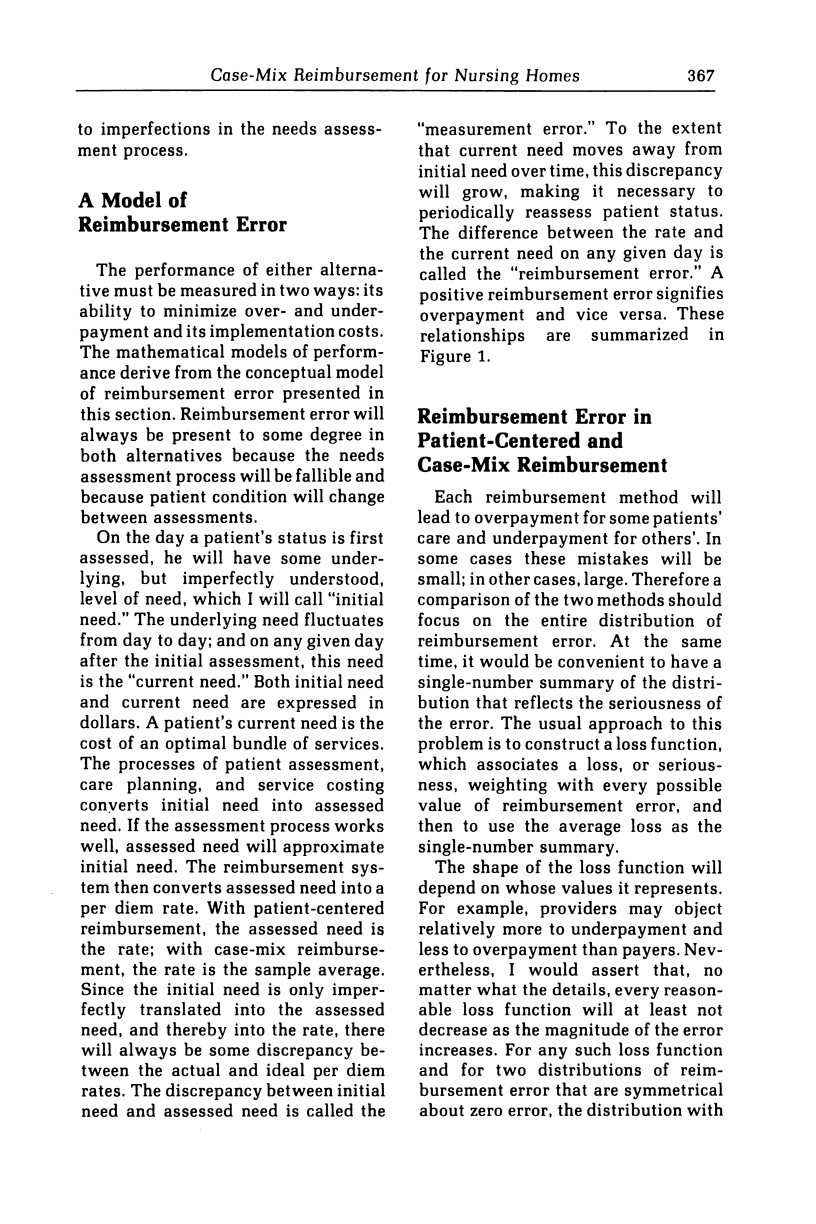

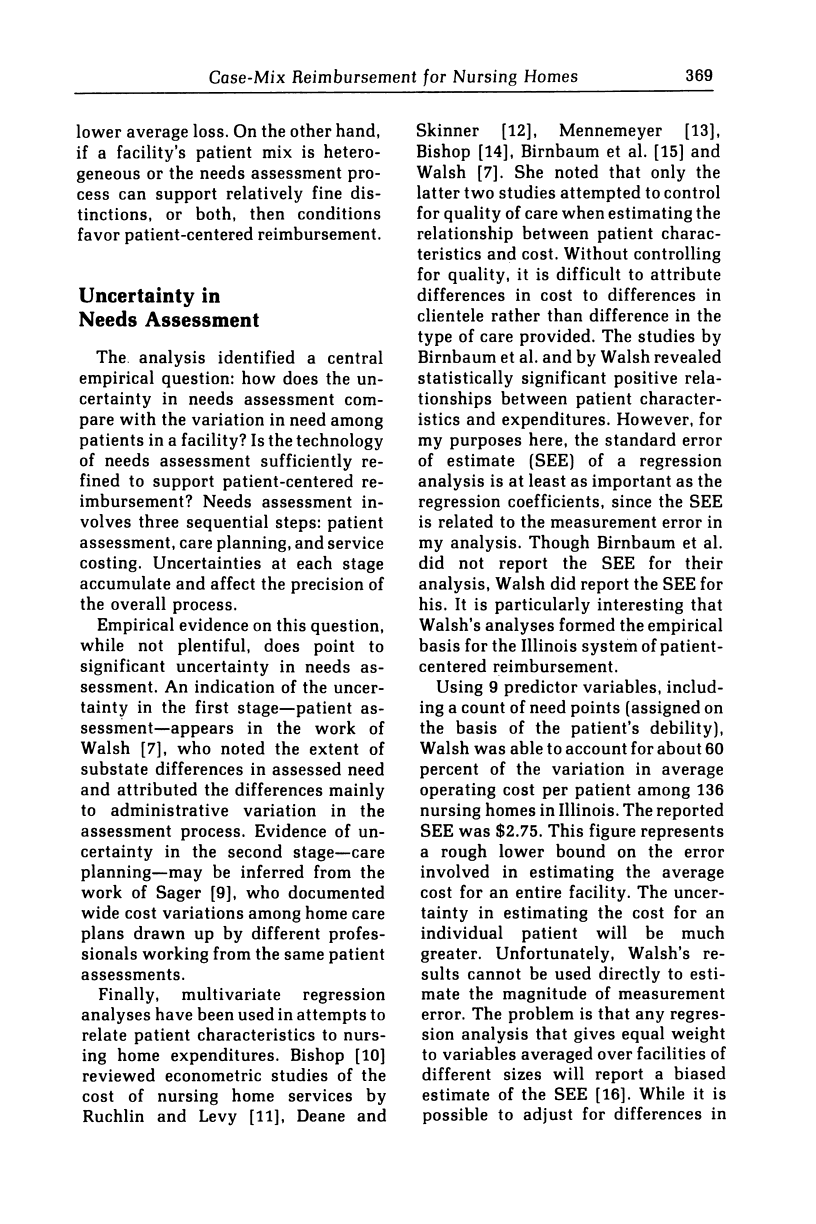
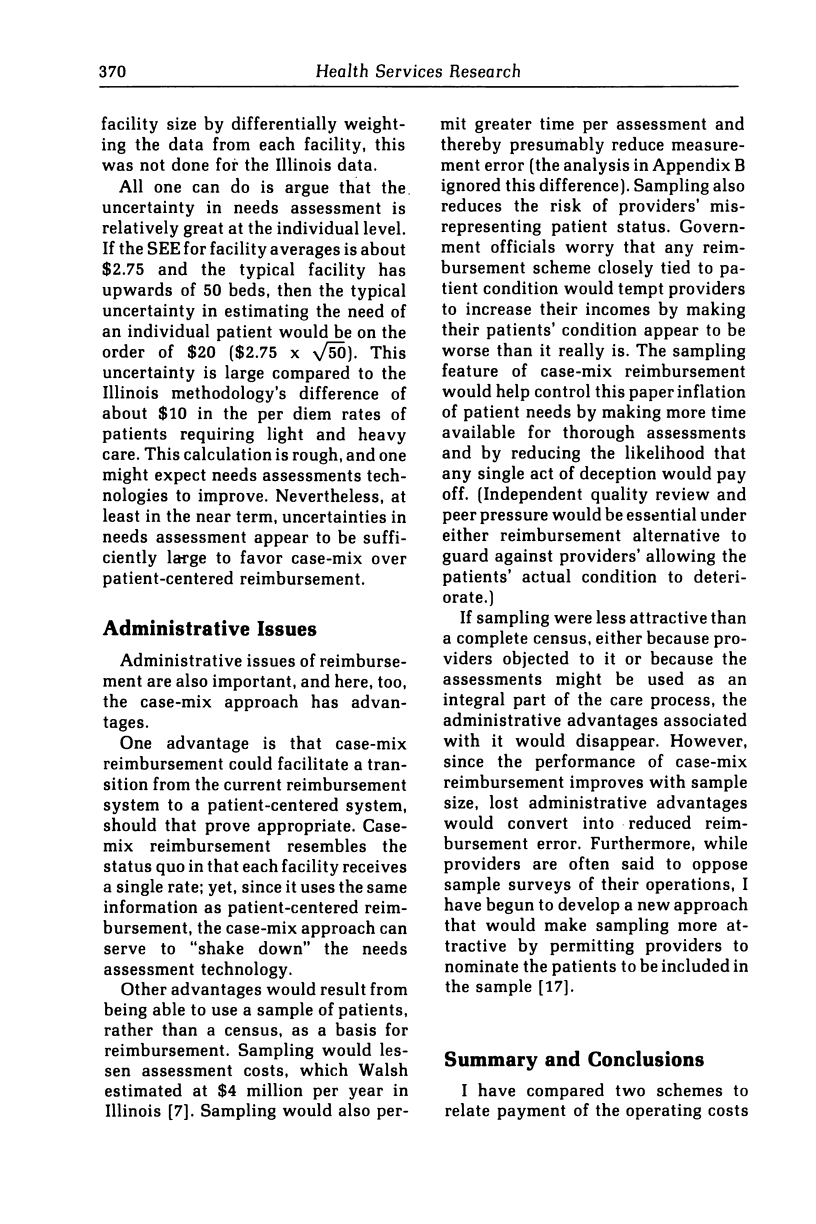

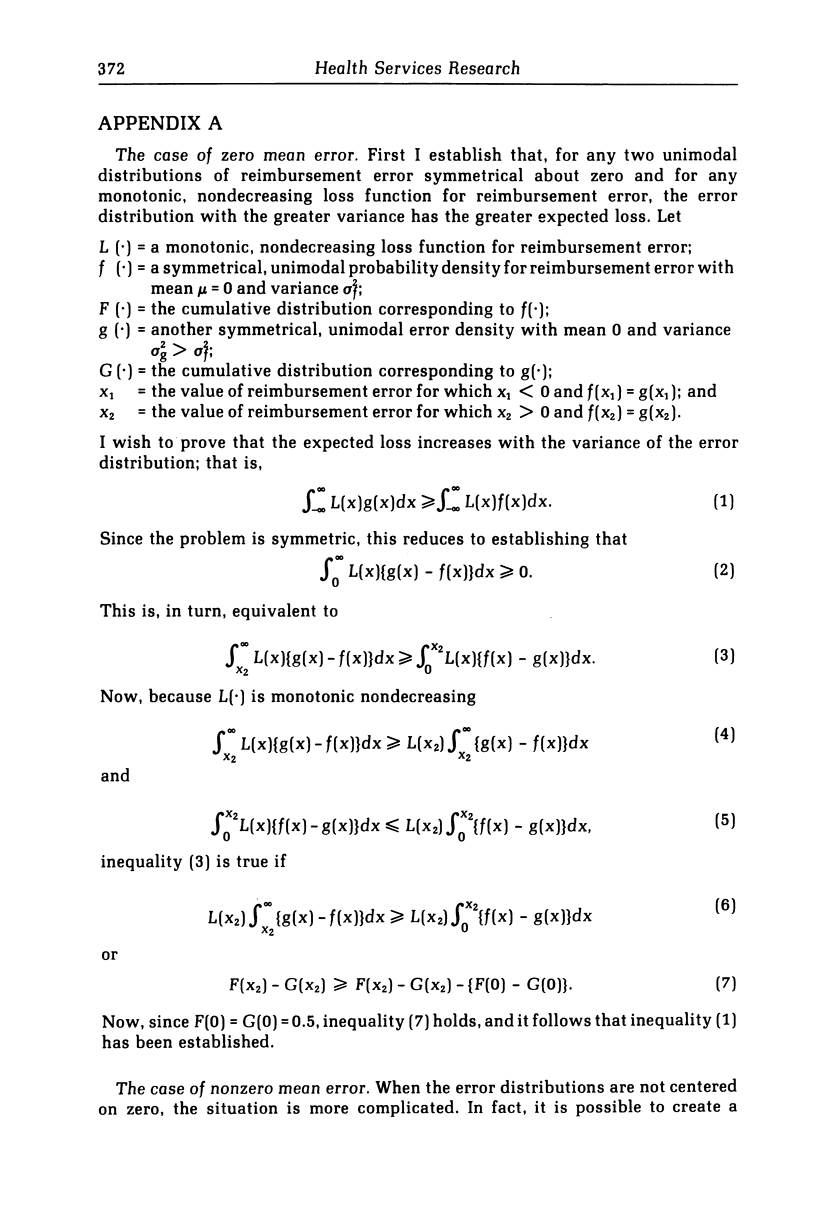

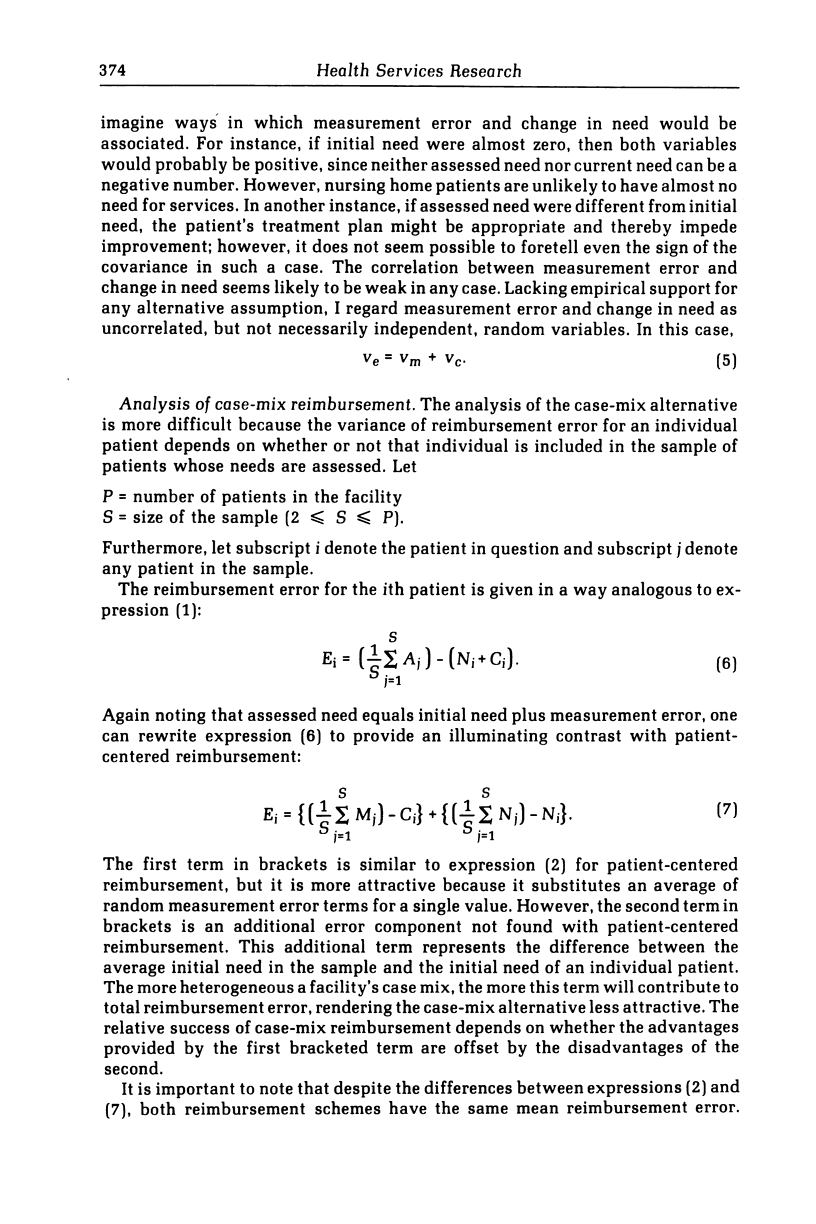

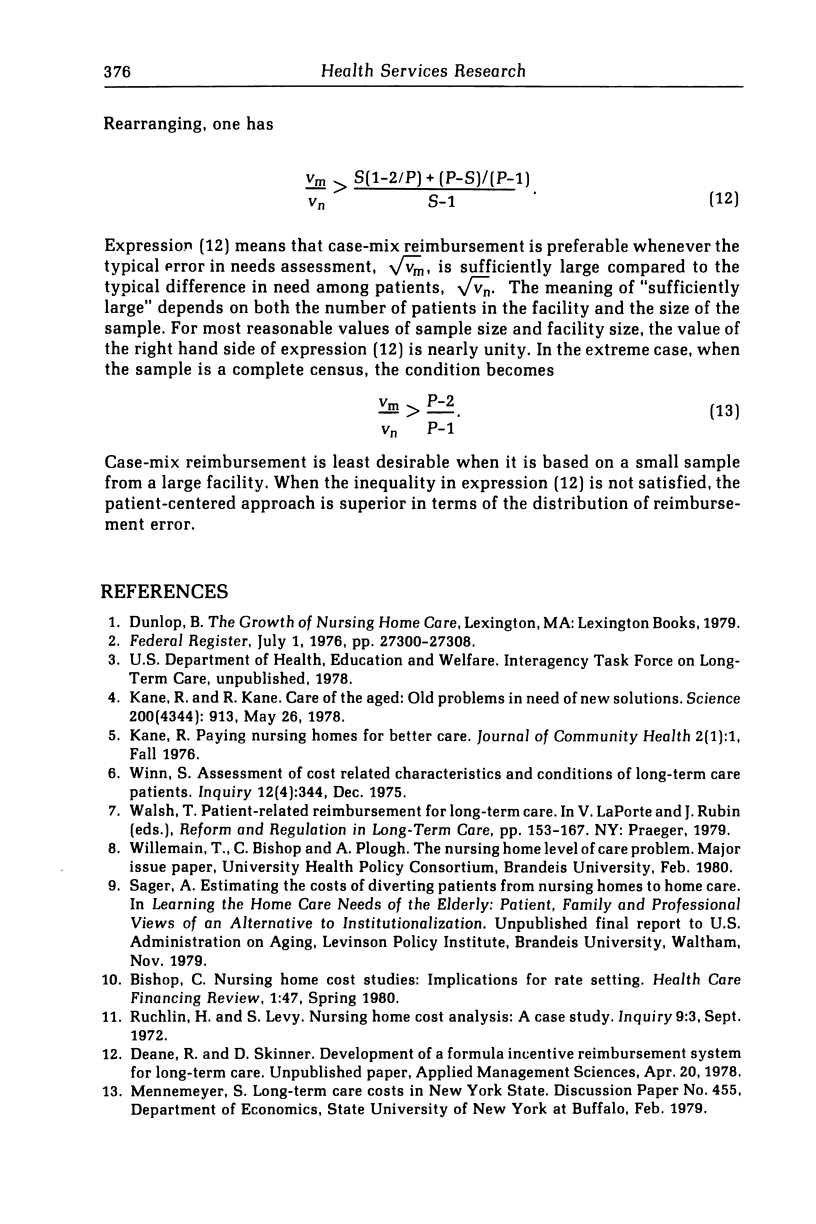
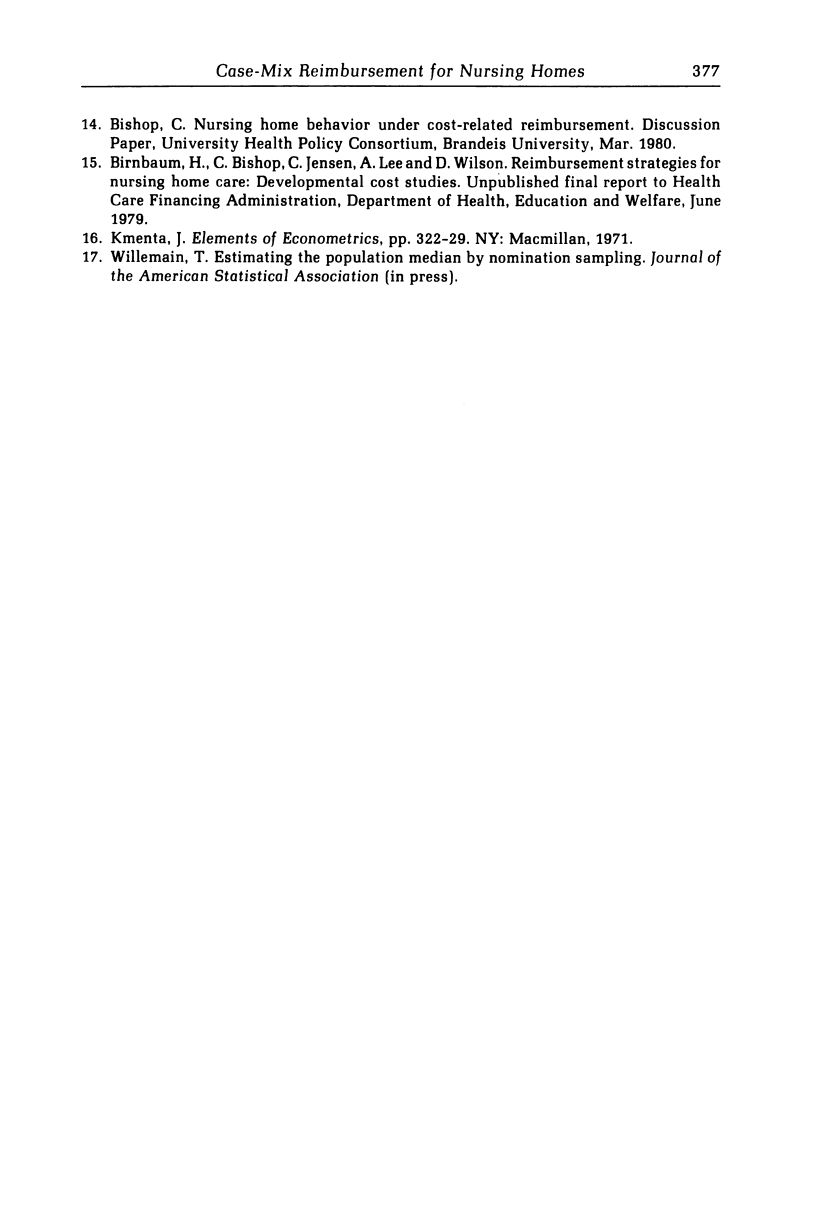
Selected References
These references are in PubMed. This may not be the complete list of references from this article.
- Kane R. L., Kane R. A. Care of the aged: old problems in need of new solutions. Science. 1978 May 26;200(4344):913–919. doi: 10.1126/science.417403. [DOI] [PubMed] [Google Scholar]
- Kane R. L. Paying nursing homes for better care. J Community Health. 1976 Fall;2(1):1–4. doi: 10.1007/BF01349487. [DOI] [PubMed] [Google Scholar]
- Winn S. Assessment of cost related characteristics and conditions of long-term care patients. Inquiry. 1975 Dec;12(4):344–353. [PubMed] [Google Scholar]


